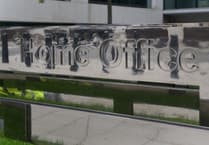There’s good news for Puttenham Common, one of Surrey’s most important areas for nature, with a 180-hectare variety of habitats including lowland heathland, dry acid grassland, boggy mires, lowland mixed deciduous woodland and wood pasture.
Wildlife that depends on healthy, connected lowland heathland includes Nightjars, Woodlarks, Nightingales, Silver Studded Blue and Small Heath butterflies, Sand lizards, Serotine Bats, Smooth Cat’s-ear, Shepherd’s Cress, Bog Pimpernel and Bottle Sedge.
Space4Nature, the trailblazing habitat mapping project led by Surrey Wildlife Trust and University of Surrey, is to team up with the Hampton Estate, which owns the common.
Together they are developing a new method for assessing some of Surrey’s most important habitats, including heathland on Puttenham Common.
Working in partnership, and at scale, is the best way to reverse the loss of biodiversity.
Hampton Estate, which has kept Puttenham Common open for public enjoyment since 1968, has launched a 100-year vision for the restoration of its precious habitats, with an emphasis on creating additional lowland heathland and wood pasture.
The abandonment of grazing on Puttenham Common since the 1940s turned the area from a largely open landscape of heathland, grassland and wetlands into a more wooded site.
Trees and scrub have grown where there once was open heathland, acid grassland, wetland, bog and mire habitats.
These heathland habitats on the common would have existed since time immemorial, created through prehistoric forest clearances and then maintained through the ancient exercise of commoners’ rights to graze animals, cut peat and take firewood.
Restoration involved clearing scrub and bracken to create space for heather to colonise. It also included the reintroduction of cattle grazing on the common, using NoFence collar technology, where a virtual boundary for animals is set on a mobile phone app. The cows wear collars that keep them in the “compartment” via an audio warning system.
Scrub clearance to “re-wet” the boggy mires will promote greater biodiversity and create wildfire barriers to increase climate resilience in the area.
Hampton Estate’s nature-based solutions manager Molly Biddell said: “Puttenham Common is a nationally-significant nature hot spot and we have an opportunity to make it even more valuable for nature and, of course, for people too.
“The more we can understand the precious habitat and species of Puttenham Common, the better, so it makes sense to team up with Space4Nature and become part of a county-wide effort to map, categorise and join up habitats.
“We are delighted to be involved in this exciting project.”
Space4Nature will use teams of volunteers using a special app to assess and record which plants, animals and specific types of habitat exist on specific areas of the common.
These results will then help design special Artificial Intelligence software that matches habitats with other similar habitats identified on Earth observation satellite images.
In this way, large-scale plans can be developed to create, protect or connect Surrey’s habitats in a way that works best for wildlife.
Over time, Space4Nature’s new habitat-mapping technology will help the team at Hampton Estate monitor the progress and impact of their plans.
Space4Nature project manager Andrew Jamieson said: “Puttenham Common’s mosaic of rare heathland makes it vitally important nature hot spot, not just in Surrey but nationally.
“And with lowland heathland now globally rarer than rainforest, the Hampton Estate team is right to put the restoration of this habitat at the top of its to-do list.
“We’ll be using this terrain to both test our evolving Artificial Intelligence capabilities and inform a cast-iron conservation plan that maximises biodiversity and ensures rare wildlife has access to the habitats it needs to feed, travel and reproduce safely.”




